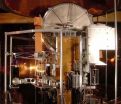(Press-News.org) Richmond, Va. (Oct. 27, 2010) – If you were dying from cancer, would you consider genetic testing? A recent study conducted by researchers from Virginia Commonwealth University Massey Cancer Center showed that most terminally ill cancer patients who were eligible for genetic testing never received it despite that it could potentially save a relative's life.
The research, "Exploring Hereditary Cancer Among Dying Cancer Patients—A Cross-Sectional Study of Hereditary Risk and Perceived Awareness of DNA Testing and Banking," was recently published in the Journal of Genetic Counseling, and is the first to document the prevalence of hereditary cancer risk and the need for genetic services and patient education among terminally ill cancer patients.
The study was conducted by VCU Massey researchers John M. Quillin, Ph.D., assistant professor in the Department of Human and Molecular Genetics in the VCU School of Medicine; Thomas J. Smith, M.D., professor in the Division of Hematology/Oncology in the VCU School of Medicine; Joann N. Bodurtha, M.D., professor in the Departments of Human and Molecular Genetics, Pediatrics, Obstetrics-Gynecology, and Epidemiology and Community Health in the in the VCU School of Medicine; and Laura Siminoff, Ph.D., professor and chair of the Department of Social and Behavioral Sciences in the VCU School of Medicine.
Investigators interviewed 43 dying cancer patients, nine of whom had a strong genetic risk. Significant findings included:
Twenty-one percent of dying cancer patients qualify for genetic assessment
None of the patients had genetic testing, even though their clinical conditions warranted it
Patients have a limited understanding of genetic services
Hereditary cancer is not being fully identified or tested at the time of diagnosis
"About 10 percent of patients are literally taking their DNA clues to cancer with them to the grave," said Smith, oncology and palliative care specialist at VCU Massey Cancer Center and co-lead researcher. In general, about 5 to 10 percent of cancers have a strong hereditary component.
Current genetic tests for at-risk relatives often fail to identify certain genetic markers for cancer, and clinicians are increasingly recognizing the value of beginning genetic assessment with a person who has cancer. Because the implications of genetics extend beyond the patients to their family members, this research proposes a new way of thinking about patient care that includes the larger reach of hereditary risk.
"Our findings suggest opportunities for identifying hereditary cancer are being lost, even as the window for identifying familial risk is closing," says Quillin, genetic counselor at VCU Massey Cancer Center and co-lead researcher. "By recognizing signs of hereditary cancer among dying patients, physicians can nurture patients' legacies while they nurture their lives."
Just as VCU Massey Cancer Center practices a multidisciplinary approach to treating and fighting cancer, interdepartmental collaboration was critical in this study. Researchers are now further exploring knowledge, attitudes and behaviors of palliative care oncologists with respect to genetic testing.
"Genetic testing should be completed early, shortly after diagnosis. Patients should ask their doctors if there is a genetic part to their disease, and test for it sooner rather than later," Smith says.
###
About VCU Massey Cancer Center
VCU Massey Cancer Center is one of only 66 National Cancer Institute-designated institutions in the country that leads and shapes America's cancer research efforts. Working with all kinds of cancers, the Center conducts basic, translational and clinical cancer research, provides state-of-the-art treatments and clinical trials, and promotes cancer prevention and education. Since 1974, Massey has served as an internationally recognized center of excellence. It offers a wide range of clinical trials throughout Virginia, oftentimes the most trials in the state, and serves patients in Richmond and in four satellite locations. Its 1,000 researchers, clinicians and staff members are dedicated to improving the quality of human life by developing and delivering effective means to prevent, control and ultimately to cure cancer. Visit Massey online at www.massey.vcu.edu or call 877-4-MASSEY for more information.
END
The new version of the Addiction Severity Index (ASI) gives health professionals the opportunity to design an integral and personalised plan of assistance for patients suffering disorders due to substance abuse.
Developed by the University of Pennsylvania (USA) in the 1980s, the ASI is the most used tool for studying disorders due to substance abuse. After more than 25 years of use, current trends have led ASI creators to update their index and adapt it to the present day reality. The new ASI-6 includes significant structure and content changes in regard to the previous ...
Scientists have discovered the secret of how an amazing sea snail injects its venom after shooting a harpoon-like tooth into its prey — or some unlucky swimmer — at jetliner speeds. The creatures, called cone snails, use a highly specialized structure that instantly pumps the paralyzing venom through the tooth and into its target. Their study appears in ACS' monthly Journal of Proteome Research.
Helena Safavi-Hemami, Anthony Purcell and colleagues note that cone snails live mainly in the shallows of the world's tropical oceans. Prized by sea-shell collectors for their ...
Tobacco, used on a small scale as a natural organic pesticide for hundreds of years, is getting new scientific attention as a potential mass-produced alternative to traditional commercial pesticides. That's the topic of a report in ACS' bi-weekly journal Industrial & Engineering Chemistry Research.
Cedric Briens and colleagues note that concerns about the health risks of tobacco have reduced demand and hurt tobacco farmers in some parts of the world. Scientists are looking for new uses for tobacco. One potential use is as a natural pesticide, due to tobacco's content ...
Scientists are reporting development of a new approach for dealing with offensive household and other odors — one that doesn't simply mask odors like today's room fresheners, but eliminates them at the source. Their research found that a deodorant made from nanoparticles — hundreds of times smaller than peach fuzz — eliminates odors up to twice as effectively as today's gold standard. A report on these next-generation odor-fighters appears in ACS' Langmuir, a bi-weekly journal.
Brij Moudgil and colleagues note that consumers use a wide range of materials to battle undesirable ...
Move over, touchpad screens: New research funded in part by the National Institutes of Health shows that it is possible to manipulate complex visual images on a computer screen using only the mind.
The study, published in Nature, found that when research subjects had their brains connected to a computer displaying two merged images, they could force the computer to display one of the images and discard the other. The signals transmitted from each subject's brain to the computer were derived from just a handful of brain cells.
"The subjects were able to use their thoughts ...
Why do some of the one million people who sustain head injuries annually in United States experience a mysterious second wave of brain damage days after the initial injury — just when they appear to be recovering? Limited clinical trials using an innovative new device to monitor brain chemistry on a second-by-second basis are underway to answer that life-and-death question, according to an article in the current issue of Chemical & Engineering News (C&EN), ACS' weekly newsmagazine. Brain injury is the leading cause of death and disability worldwide.
C&EN Senior Editor ...
Scientists are calling for more research on the possibility that some supposedly healthful plant-based antioxidants — including those renowned for their apparent ability to prevent cancer — may actually aggravate or even cause cancer in some individuals. Their recommendation follows a study in which two such antioxidants — quercetin and ferulic acid — appeared to aggravate kidney cancer in severely diabetic laboratory rats. The study appears in ACS' bi-weekly Journal of Agricultural and Food Chemistry.
Kuan-Chou Chen, Robert Peng, and colleagues note that vegetables, ...
Extending its 26-year tradition of innovative quantum voltage standards, researchers at the National Institute of Standards and Technology (NIST) have begun shipping a new 10-volt standard to users around the world. The programmable system measures both direct current (DC) and alternating current (AC) voltages.
NIST AC/DC 10-volt standard chip.
The new 10-volt system* builds on a number of previous NIST inventions, from the initial 1-volt standard in 1984 through the 2006 unveiling of the world's first precision instrument for directly measuring AC voltages.** Because ...
Better psychological and spiritual support, improved planning of care and stronger relationships with physicians are necessary to improve end-of-life care in Canada, according to a study by a Queen's University professor.
"High quality end-of-life care should be the right of every Canadian," says professor of Medicine and Epidemiology Daren Heyland, who is also a researcher at Kingston General Hospital. "But it's not always happening. We know from international studies that Canada ranks ninth in the world in terms of quality of care provided at the end of life."
The study, ...
Taking the first steps of what would be a major historical advance in the science of measurement, the National Institute of Standards and Technology (NIST) is participating in a worldwide effort to recommend major revisions to the International System of Units (SI), the modern metric system that is the basis of global measurements in commerce, science and other aspects of everyday life. The new SI, which would be based on seven constants of nature, would enable researchers around the world to express the results of measurements at new levels of consistency and accuracy.
The ...


